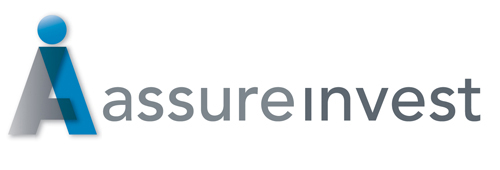Making advice scalable has been a major problem for many practices. With a fixed number of hours in each week, there is a limit to the number of client meetings and advice documents that can be completed. This also says nothing of the highly labour-intensive investment research, portfolio construction and related administration work that needs to be done.
Advisors increasingly see managed accounts, or outsourced professionally-managed portfolios, as a way to make their businesses more scalable. By making this transition, advisors can deliver better customer outcomes with reduced investment costs and increased transparency relative to managed fund unit trusts.
With more streamlined and automated processes, advisors can take on more customers and increase their face time with each, thereby deepening their relationship.
By eliminating non-core activities within their business, advisors’ time is freed up to more deeply analyse customer needs, find creative strategic solutions and also search out new customer acquisition opportunities.
Managed Accounts Are a Potent Makeover Solution for Your Business
Managed accounts are a powerful business transformation solution that help advisors manage their customer’s wealth over time. Advisors and their customers can easily see what is in their portfolio and investors have ownership of the underlying holdings, unlike managed funds.
Shifting to managed accounts allows advisors to free up considerable amounts of time to focus more on individual customer needs. No longer is there a need to prepare record of advice documents as the customer gives discretion to the advisor and all of the portfolio reporting is generated automatically. Transactions are also looked after by the managed account platform provider.
Managed accounts are an excellent way to control risk and actively manage portfolios within an advisor practice. Portfolio changes are implemented promptly and efficiently unlike a practice relying on receiving records of advice back from clients. The opportunity to boost returns may be lost if the customer is away or if the advice document is lost.
Depending on the investment manager, managed accounts may be tailored to suit different investor preferences. Managed accounts also do away with the extensive administrative burden associated with directly investing in individual securities.
There is also a critical saving of time for advice customers by shifting to a managed account approach. How many customers really want to spend the time reviewing and approving every single portfolio change? Many prefer to agree on the overall strategy and mandate and allow the professional investment manager run things from there under a discretionary agreement.
Service Tailored to Your Customers’ Needs
Today more than ever, investor customers demand and expect a high level of transparency and control over investment decisions and access to detailed information on their portfolios. With managed accounts, advisors work with their customer to choose the professionally managed model portfolio that suits their specific investment goals.
Advisors and investors are able to see their holdings of shares and other securities as frequently as they wish via always up-to-date online reports. Information typically includes portfolio performance, valuations, transactions, dividend payments, franking credits and any fees and costs.
Ongoing strong growth in the Self-Managed Superannuation Fund (SMSF) sector provides enormous opportunities for advisors as more of these people will be seeking professional guidance. Managed accounts are a great solution for this community because of their preference for direct securities due to their added transparency and control. Over 30,000 SMSFs were established in the year to June 2015 according data compiled by the Australian Taxation Office. Around 32% of SMSF assets were held in direct shares.
BENEFITS OF MANAGED ACCOUNTS FOR ADVISORS AND INVESTORS

More Advantages of Managed Accounts
-
Beneficial ownership
The investor customer, or the trustee of the customer’s superannuation fund, is the beneficial owner of the underlying securities/investments. This means that the customer receives the dividends and any franking credits from the underlying securities that make up the portfolio.
In contrast, if the customer’s assets were held in a managed fund, they would be issued ‘units’ in the fund but they would have no direct control over the underlying shares.
Customers are able to transfer shares into and out of managed accounts and can also shift the holdings into other managed accounts without changing the beneficial owner. As a result, when transferring shares, capital gains tax events and brokerage and buy/sell spreads may all be avoided.
-
Professional management
Managed accounts are managed by dedicated and experienced professional investors focused on generating superior returns.
-
Transparency
Investors and advisors can see all investment held in the portfolio at any time. Investors can choose to exclude or add certain securities depending on their preferences.
-
Compliance control
There is a reduced burden of reporting and managing corporate actions across each investor customer. Records of advice (ROAs) are not required as discretion is given to the advisor.
-
Accessibility
Managed account options often have low minimum balances, even below $10,000.
-
Portability
Investor holdings can be readily transferred into and out of the models.
-
Cash management
Customers’ dividends and other returns are paid into their managed account. When advisors set the account up for their customer, they can choose to take the dividends as cash or to reinvest them into their portfolio. If they elect to reinvest, additional shares will be purchased on the customer’s behalf and added to their portfolio.

-
Reduction of paperwork
All that advisors and investors have to do is select the most appropriate model portfolio for their situation and the managed account provider takes care of the rest. Advisors will no longer have the considerable administrative burden associated with direct investing in the share market including managing contract notes, tax paperwork, corporate actions instructions, share price monitoring and much more. Complete and comprehensive annual reports for the customers’ accountant are typically prepared by the managed account platform.
-
Secure Guardianship
For peace of mind, safe custody of the investments is essential. The managed account platform provider has custody relationships to provide the security investors expect.
-
No inherited liability
Customers will accrue tax liabilities only on the movement of the assets within their own portfolio. Being a managed account structure, the assets are owned by the customer so they do not inherit any gains from trades that benefited other investors. In contrast, managed funds pool their assets in a unitised trust and as trades occur in the fund gains or losses are built up during each year. In such a structure, customers may be responsible for a tax liability they inherit based on previous trades by the fund manager even if their own units have not increased in value. This liability is referred to as an “embedded capital gain”.
-
Greater tax effectiveness
One of the many benefits of a managed account is the flexibility offered to advisors and customers in, for example, controlling capital gains outcomes, manually selecting share parcels and so on. Some managed account platforms also provide ‘what if’ tools to check the impact of proposed actions on capital gains tax for instance, to enable maximum financial benefit to your customer.
-
Cheaper trading costs
The managed account platform encompasses many thousands of investor portfolios. Depending on the specifics of the platform, when an investor’s portfolio is to be changed, all trades in each security may first be netted across all investor holdings sharing in that change. A single net trade is then sent to market. Brokerage, typically at wholesale rates, is shared in proportion. Thus brokerage costs are extremely low.
-
Remaining in touch with your portfolio
Advisors and their customers can view their portfolio online at any time to check out all aspects of its performance, valuation and often much more.
What are the risks of managed accounts?
In common with managed fund and direct security investing, managed accounts bear a number of risks including market, liquidity, manager and concentration risks. Advisors should carefully examine the investment strategy, asset allocation, manager’s track record and relevant product disclosure documents before recommending a managed account service to a customer.
Copyright
Copyright © 2016 AssureInvest Pty Ltd ABN 55 636 036 188 (AssureInvest). All rights reserved. No part of this publication may be reproduced or distributed in any form without prior consent in writing from AssureInvest.
Disclaimer
AssureInvest has taken all care in preparing this presentation and the data, information and research commentary within it (together referred to as the ‘publication’) but to the extent that the publication is based on information received from other parties no liability is accepted by AssureInvest for errors contained in the publication or omissions from the publication. AssureInvest gives neither guarantee nor warranty nor makes any representation as to the correctness or completeness of the publication. AssureInvest bases its data, information and research commentary on information disclosed to it by other parties. Past performance is no guarantee of future performance.
General Advice Warning
The information contained within this publication is of a general nature only. No information contained in the publication constitutes the provision of securities advice. AssureInvest warns that: (a) in preparing the publication, AssureInvest did not take into account the particular goals and objectives, anticipated resources, current situation or attitudes of any particular person; and (b) before making any investment decisions on the basis of that publication, any investor or prospective investor needs to consider, with or without the assistance of a securities adviser, whether the information contained within the publication is appropriate in light of the particular goals and objectives, anticipated resources, current situation or attitudes of the investor or prospective investor. If the information contained in this document relates to the possible purchase of a financial product, the client should consider the relevant product disclosure statement (PDS) before making any decision.
AssureInvest Pty Ltd
ABN 55 636 036 188 AFSL number 478978.

FREE Special Report: How to Jump ahead of competitors and add more value for clients
Learn how you can boost profits while enhancing customer outcomes.



